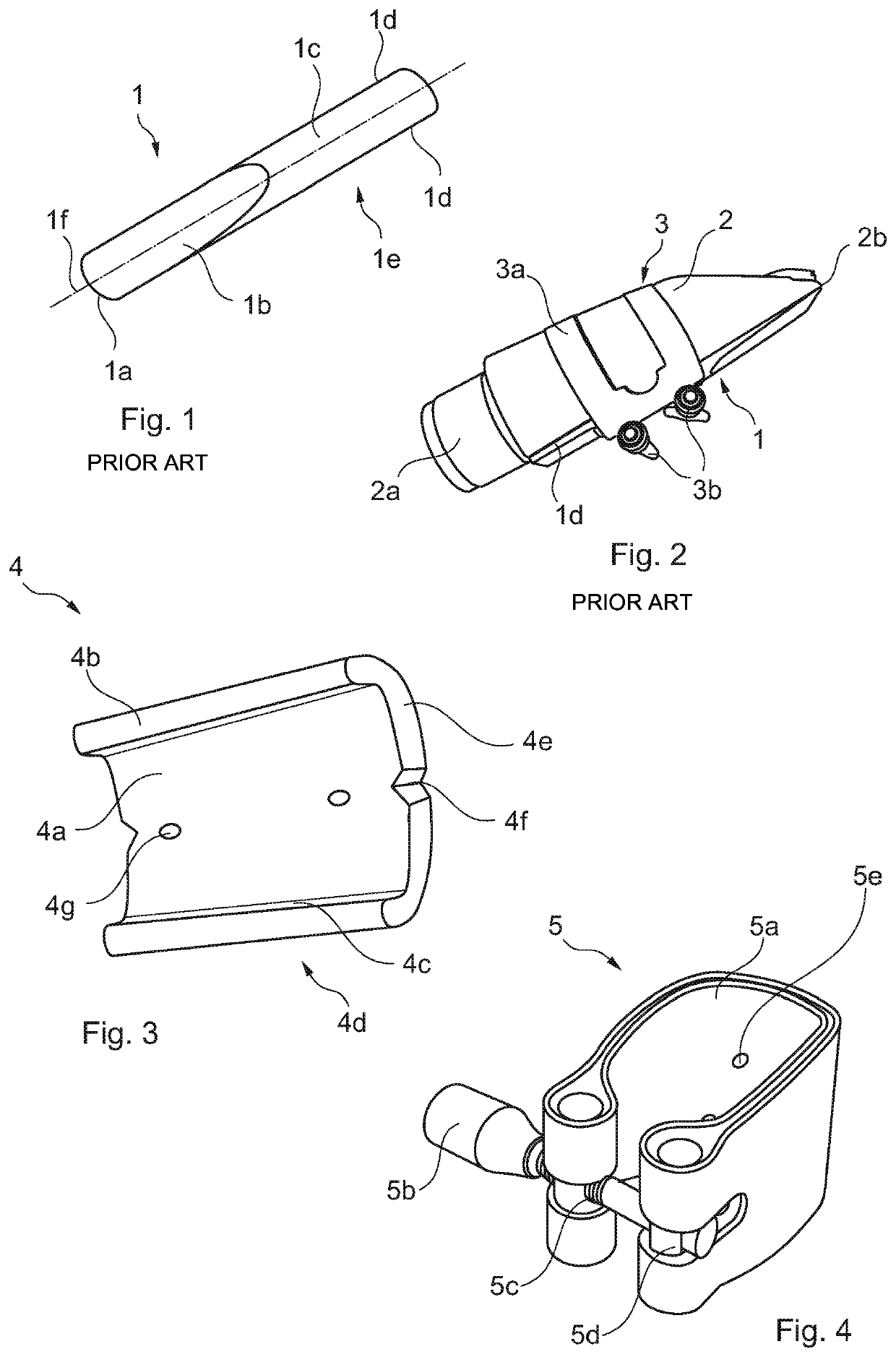Ligature For Woodwind Instruments
a woodwind instrument and ligature technology, applied in the direction of instruments, wind musical instruments, musical instruments, etc., can solve the problems of frequent assembly and disassembly processes, time-consuming procedures, easy mistakes, etc., to achieve stable force-fit, reduce labor intensity, and simplify the retrofitting of existing instruments/mouthpieces
- Summary
- Abstract
- Description
- Claims
- Application Information
AI Technical Summary
Benefits of technology
Problems solved by technology
Method used
Image
Examples
Embodiment Construction
[0083]FIG. 1 shows a common, usually symmetrical reed 1 with the axis of symmetry or longitudinal axis 1f for reed and / or woodwind instruments. The front edge 1a is the vibrating edge of the vibration area 1b. In a clamping area 1c, which is thickened as compared to the vibration area 1b, the reed is clamped in a ligature, wherein its clamping devices according to the prior art exert a more or less large-surfaced press-on force onto the surface, which is curved in the transverse direction of the reed, of the clamping area 1c. Because the reed must vibrate in the vibration area 1b to generate sound, it only has a very small thickness, which leads to formation of the two lateral limiting surfaces 1d. In the clamping area 1c, the lateral limiting surfaces 1d extend in a taper with respect to each other such that the reed 1 becomes increasingly narrower toward the rear. Not shown in this figure is the completely flatly formed bottom 1e (cf. FIGS. 6a, 6b) of the reed, which forms the con...
PUM
 Login to view more
Login to view more Abstract
Description
Claims
Application Information
 Login to view more
Login to view more - R&D Engineer
- R&D Manager
- IP Professional
- Industry Leading Data Capabilities
- Powerful AI technology
- Patent DNA Extraction
Browse by: Latest US Patents, China's latest patents, Technical Efficacy Thesaurus, Application Domain, Technology Topic.
© 2024 PatSnap. All rights reserved.Legal|Privacy policy|Modern Slavery Act Transparency Statement|Sitemap

